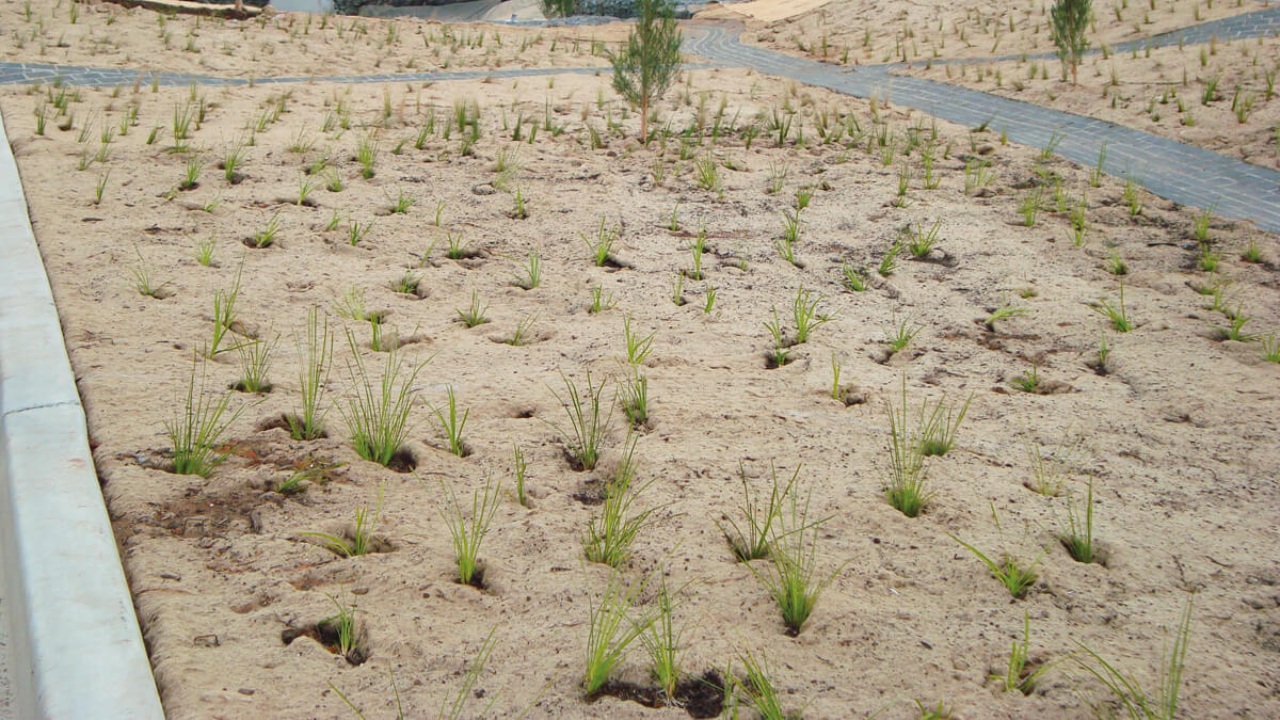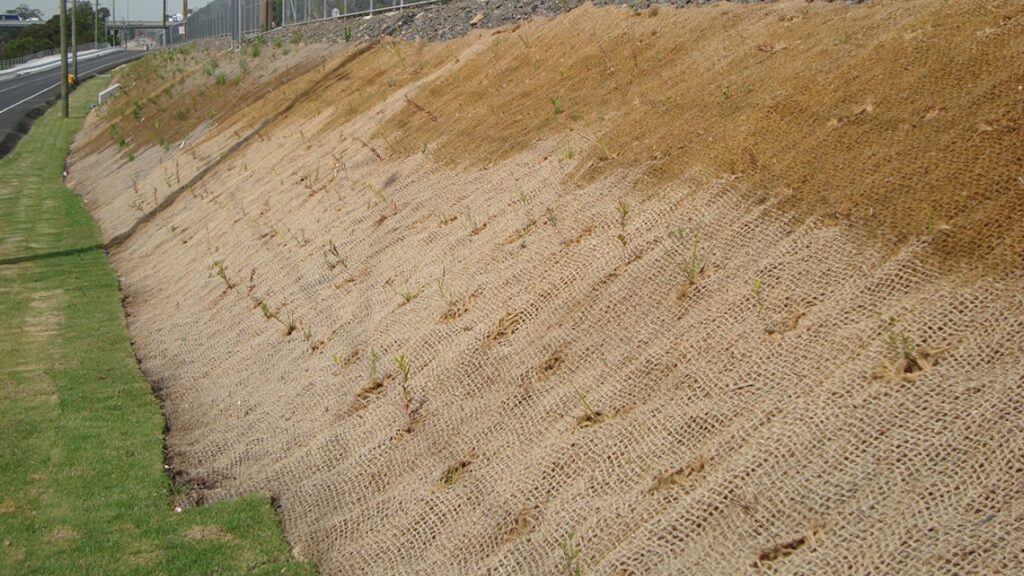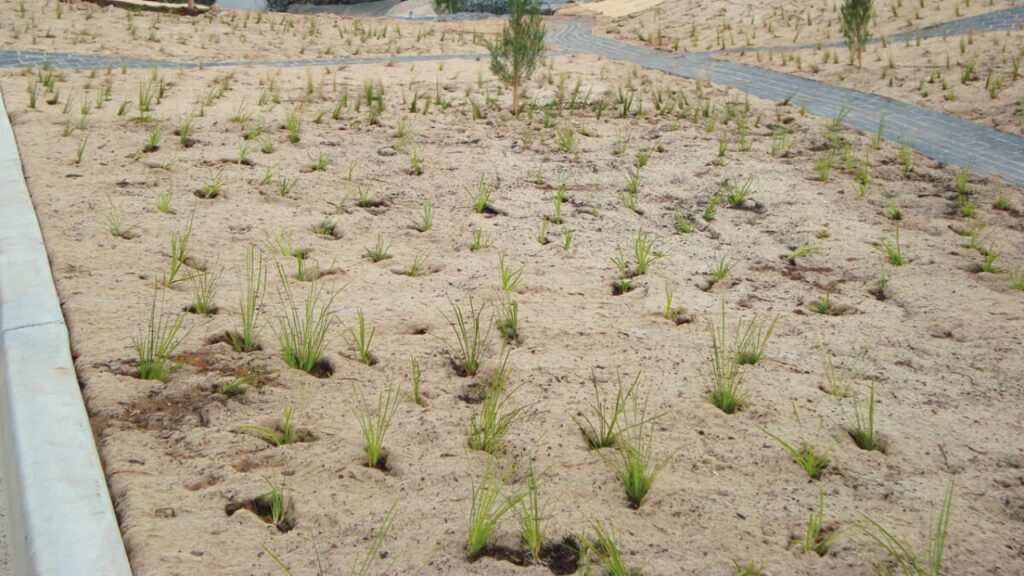Coir vs jute for erosion control
For many landscaping and construction professionals, jute and coir are important products in their toolkit.
However, understanding the differences between the two will ensure that every project uses the absolute best product for that specific purpose.
What is jute matting?
Totally natural and biodegradable, jute is one of the oldest and most widely used fibres in the world. It is made from the tropical jute plant, a thriving and readily renewable resource that is easy to harvest and cheap to manufacture.
Because it is made from natural woven plant fibres, jute matting is breathable, allowing air and water to pass through and providing an ideal environment for healthy plant growth. Acting in a similar way to mulch, it helps to retain moisture in the soil as well as prevent erosion on slopes and in coastal areas.
Jute matting is also ideal for weed suppression, as it is thick enough to block out light whilst still allowing air and water to permeate the soil below. Cutting small slits in the jute matting to plant new seedlings, means that the surrounding soil is kept free from weeds under the mat, allowing new plants to thrive.
For more details on jute matting, take a look at our TEC Mat Jute Fibre Blanket.
What is coir matting?
Where jute is made from a grass-like plant fibre, coir matting is made from the fibres on the husks of coconuts. As well as being 100% natural and biodegradable, coir is perfect for retaining moisture and preventing heat and wind from drying out the soil and causing erosion issues.
In coastal applications and areas where running water is a factor such as creeks and drains, coir matting offers excellent performance, providing a strong, long-term defence against erosion even in fast-flowing water.
An essential landscaping supply product, coir matting has a looser weave than jute, giving the impression of a netting rather than a solid blanket. Coir netting is easy to install and durable, although it will eventually break down completely after new plants have established, forming part of the permanent landscape.
Open weave coir matting is strong and resistant to rotting, and it lasts longer than jute due to the material itself and the woven method of production. Used for landscaping, road construction projects, slopes, waterways and revegetation sites, it is able to resist high temperatures, strong winds, and the effects of saltwater and fast-flowing creeks and drains.
For quality coir netting, we recommend TEC Mat Coir Erosion Matting.
Contact the erosion control experts at Polyfabrics
With a combination of strength and biodegradability, both jute and coir mats have become the go-to solution for many erosion control and embankment projects. Holding their shape for a number of years, even in harsh conditions, jute and coir mats allow landscaping projects to settle into the surroundings and vegetation to take hold, before the fibres slowly break down into the environment.
Erosion control mats made from natural materials such as coir and jute are heavily used in landscaping and drainage applications, and at Polyfabrics we carry large amounts of stock and can deliver to your site, fast.
Call our friendly team for a fast quote and delivery Australia-wide.
For many landscaping and construction professionals, jute and coir are important products in their toolkit.



